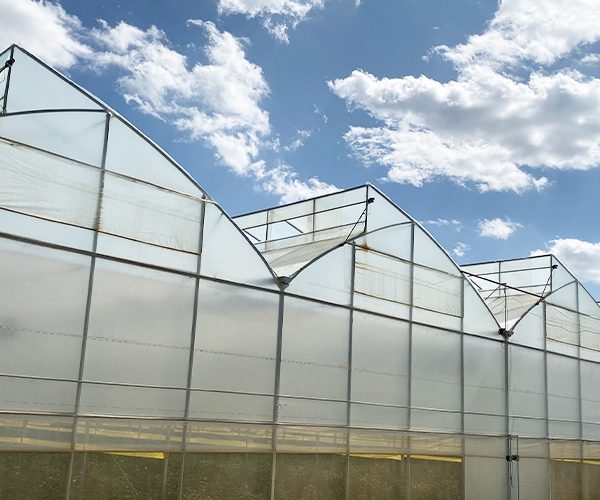The durable polycarbonate material provides excellent insulation and UV protection, creating a stable environment for plant growth. With the integration of hydroponic systems, plants deliver essential nutrients directly to their roots, promoting faster growth and higher yields. This combination of advanced greenhouse technology and hydroponic cultivation can produce quality crops all year round, making it ideal for sustainability and high yields.
Product Feature
Stable structure ,beautiful and generous, good visual experience
Excellent insulation performance, moderate light transmittance
Strong wind resistance, suitable for windy areas
Long service life, high tensile strength
Lightweight material for easy installation and maintenance
High transmittance, up to about 85%
Good thermal insulation performance, energy saving effect is obvious
Strong impact resistance, good weather resistance
Durable and affordable
Product Details
Greenhouse Structure
In the agriculture greenhouse, hot-dip galvanized steel offering durability and corrosion resistance. This steel undergoes a process where it is immersed in molten zinc, forming a protective coating that shields against rust and environmental degradation. Its strength and longevity make hot-dip galvanized steel an ideal choice for greenhouse frameworks, ensuring stability and longevity in various climate conditions.
Covering Material
These sheets offer exceptional impact resistance and UV protection, ensuring a safe and conducive environment for plant growth while minimizing the risk of breakage and heat loss.
Cooling System
The cooling system in a polycarbonate board greenhouse use the principle of water evaporation to lower temperatures, employing high-quality cooling pads alongside powerful fans. At its core, the system features evaporative cooling pads crafted from corrugated fiber paper with a durable composition resistant to corrosion. These specialized pads ensure thorough saturation with water, and as air flows through them, the exchange between water and air transforms warm air into cooler, humidified air, effectively regulating the greenhouse climate for optimal plant growth.
Heating System
Two primary types of heating systems are commonly used in glass greenhouses: one powered by boilers and the other by electricity. Boilers can utilize various fuels such as coal, oil, gas, or biofuels, requiring pipelines and a water warming blower for heat distribution. Conversely, electric heating systems rely on warm air blowers powered by electricity to maintain optimal temperatures within the greenhouse.
Irrigation System
The agriculture greenhouse irrigation system including with water purification system, water storage tank,and a water and fertilizer integrated machine.Drip irrigation delivers water directly to the plant roots, promoting efficient water usage and minimizing waste, while spray irrigation provides broader coverage, suitable for certain crop types or agriculture greenhouse configurations.
Hydroponics System
The hydroponics system typically involves the use of nutrient-rich aqueous solutions to cycle to plant roots housed in specialized growing media. By eliminating soil, hydroponics system maximize space use, conserve water, and promote accelerated plant growth.
External Sunshade System
External shading systems effectively block or filter sunlight to prevent overheating and minimize glare. By controlling solar radiation, external shading systems help regulate temperature, reduce energy consumption, protect fragile plants from excessive light, and ensure continued healthy growth in a agriculture greenhouse environment.
Inner Sunshade System
The inner sunshade system is installed inside the agriculture greenhouse to effectively control the light transmission and prevent the temperature from overheating. The inner sunshade system ensures a comfortable growing environment in the agriculture greenhouse.






